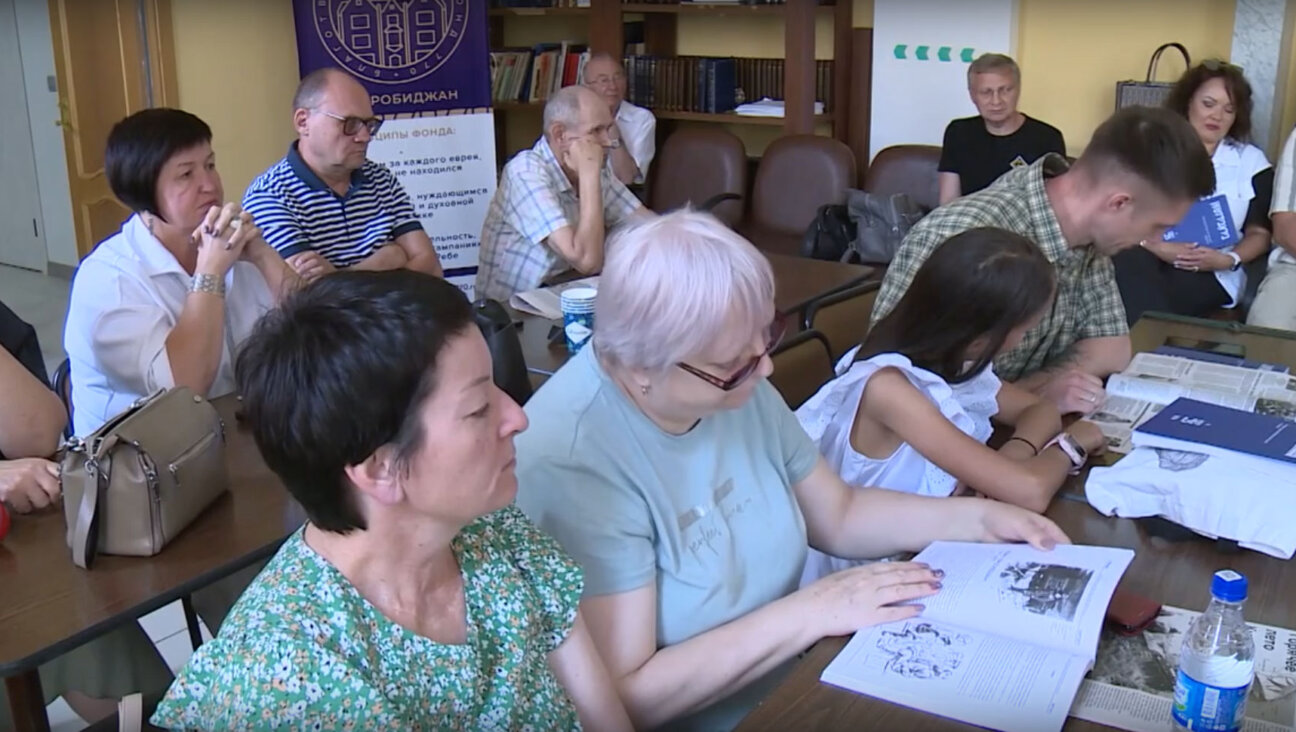Claims Conference Focuses on Securing Funds for Home Health Care
Responding to a groundswell of requests from aging Jewish Holocaust survivors, the organization responsible for securing support for survivors is putting an increasing emphasis on winning funding for home health care.
In the first step of this effort, last month the Conference on Jewish Material Claims Against Germany concluded its first agreement with the German government dealing solely with home care, which will bring $7.2 million to survivors around the world.
The money will go to people such as Boro Park resident Chaja Krojn, 83, who came to America in 1948 after surviving the Holocaust in Polish and Siberian work camps.
A few weeks ago, Krojn, who asked to be referred to by her Yiddish name for anonymity, was released from a hospital in Brooklyn, N.Y., after being treated for a painful compression of her vertebrae. Within hours of entering a nursing home rehabilitation center, Krojn called her caseworker at the social service agency Bikur Cholim, which serves the Orthodox community in Brooklyn, desperately asking for help to escape.
There were physical reasons for Krojn’s desire to leave — an uncomfortable bed and the suffocating air conditioning — but her aversion to the institutional setting was also a reason. The hospital reminded her of the time when, suffering from typhus, she was held against her will in a hospital in Poland, forced to watch her 8-year-old sister starve to death in the next bed.
The thought of being institutionalized, even for a short time, was overwhelming for Krojn. With Bikur Cholim, Krojn received almost eight hours a week of help with chores and medical tasks, allowing her to stay at home.
With a growing number of elderly Americans wanting to stay in the comfort of their homes for as long as possible, home health care has become a growing focus of social-service agencies, especially because few public or private insurances will pay for the service.
Krojn had worked for the city of New York for 10 years, but her health plan would cover a nursing home only in the event that she became incapacitated. New York is one of the few states in which the Medicaid health insurance program for the low-income elderly pays for home health care, but Krojn fell just above the poverty level that would have qualified her.
“This issue will hit us like a tidal wave on the beach. Everyone thinks that some insurance will cover home care, and almost none do,” the president of the National Association for Home Care and Hospice, Val Halamandaris, told the Forward.
Among Holocaust survivors, however, memories like that of Krojn, which unfortunately are commonplace, make the aversion to institutionalized care much more extreme and the need for home health care a much more pressing concern.
Last year, of all the money allocated by the Claims Conference for social welfare services around the world, more than 40% went to pay for home care — almost $28 million. In past negotiations with the German government, the conference has devoted most of its energy to winning pensions for a broad group of survivors, but recently the focus in negotiations has shifted to winning funding for home care, according to Gideon Taylor, the conference’s executive vice president.
“The desire for home care,” Taylor said, “is similar across every different survivor population, and in general there are not many other sources of funding.”
Much hope for increased funding has fallen on the $1.25 billion Swiss bank settlement, but social-services experts warn that the unclaimed funds alone will not be enough to cover unmet needs. Proposals for social-service programs submitted to the federal judge overseeing the distribution of funds in the Swiss bank settlement illuminate the growing need for home care around the world, as well as the different regional contexts in which that need takes place.
In Israel, for example, 17.7% of all survivors are in need of home health care. Israel, however, is also the only country with a large survivor population in which the government covers home care services. Under the Community Long-term Care Insurance Law, elderly Israelis with physical impairments are entitled to between 10 and 15 hours a week of home care. That is more than most survivors in the United States can expect from Jewish social-service agencies.
The Israeli government, which requested more than half of any unclaimed funds from the Swiss bank process, made some plans for more extensive home-care programs for survivors, but the emphasis in the Israeli proposal was on social programs and housing subsidies.
In the former Soviet Union, on the other hand, more than half of a $16 million proposal was slated to pay for home health care. The American Jewish Joint Distribution Committee, which cares for survivors in the former Soviet Union, reported that 14% of the 121,000 survivors in the former republic need the service.
Unlike in the United States, the funding was not needed to keep survivors out of nursing homes. There are few functioning nursing homes in the former Soviet Union, so it is either home care or nothing.
However in the former Soviet Union, home care has not been the focus of many funding proposals, because of the more immediate need for basic aid for food. In the United States, where survivors have few such emergency needs, survivor groups have focused most of their energy on the home health care needs.
“If you ask any survivor in the United States what they want from the Claims Conference, you would hear home care,” said David Mermelstein, a survivor who is the vice president of the Holocaust Survivors Foundation USA. “This is something that everyone wants, and everyone could use.”
But the American proposals for the Swiss bank settlement underscored the lack of reliable information on the need among survivors in the United States. A team of researchers at Brandeis University, attempting to compile a comparative study of the needs of survivors around the world, found a “crisis in the state of research” about survivor populations in the United States.
The roof body of Jewish charitable federations, United Jewish Communities, estimated that 3,289 survivors outside of New York would need home care this year, at a cost of $8.5 million. The only figure given for home-care need around the country was provided by the Association of Jewish Family and Children’s Agencies, which estimated that 4,000 survivors are receiving home health care and another 4,000 soon will need help.
Both studies were appended to a proposal from the Holocaust Survivors Foundation USA, but at a public hearing April 29, federal judge Edward Korman attacked the organization for putting forward unreliable figures.
“I’m willing to consider what you want if you have hard evidence,” Korman said. “The basic problem is that your organization has not given me any statistics that are worth anything.”
It is not hard to understand the difficulties of gathering such figures in the United States, with its complicated combination of public and private health care systems. States also provide different services to the elderly through the Medicaid program and other local health services.
For example, Florida, which is home to the third-largest survivor population in the United States, spends only 18 cents on services for the elderly for every dollar spent on them in New York, according to research done by the United Jewish Communities. Last year in Broward County, Fla., the Jewish Family Services had to cut the home health care provided to 129 survivors because of a funding shortfall. This year the agency anticipates that an additional 75 individuals will need the services.
Even in New York, however, where more than half of all American survivors live, much unmet need exists.
At New York agencies such as Bikur Cholim and Self Help, which is the largest New York agency helping survivors, the emphasis has turned to helping patients qualify for Medicaid. Many, like Krojn, have to pay Medicaid the difference between the Medicaid income cutoff and their own income, which Bikur Cholim will use its funds to help cover. Right now, even with the pain caused by her osteoporosis and diabetes, Krojn is ecstatic.
“I have the porch. I see people passing by,” Krojn said. “I still think I’m alive. If I go to the hospital, I’m already dead.”
A message from our CEO & publisher Rachel Fishman Feddersen

I hope you appreciated this article. Before you go, I’d like to ask you to please support the Forward’s award-winning, nonprofit journalism during this critical time.
We’ve set a goal to raise $260,000 by December 31. That’s an ambitious goal, but one that will give us the resources we need to invest in the high quality news, opinion, analysis and cultural coverage that isn’t available anywhere else.
If you feel inspired to make an impact, now is the time to give something back. Join us as a member at your most generous level.
— Rachel Fishman Feddersen, Publisher and CEO





















